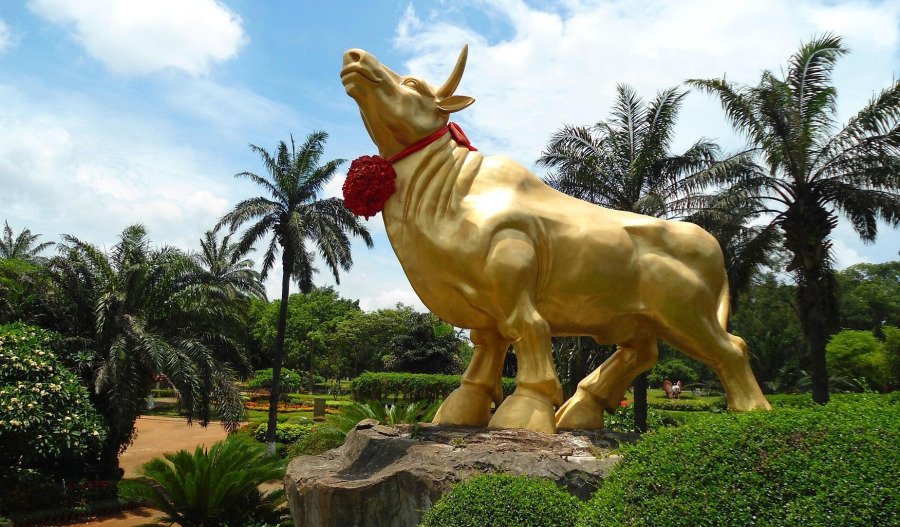While gold gained another 7% last week, peaking above US$3,245 an ounce yesterday as investors sought refuge from trade tariffs-ravaged shares and bonds, there’s mounting speculation that the precious metal is far from finishing its upward climb.
Investor fears over trade wars tipping the United States into recession have already pushed gold prices up more than 20% this year.
Assuming central bank buying and huge inflows in gold exchange-traded funds continue to accelerate at a clip, Goldman Sachs believes it is possible for gold prices to trade close to US$4500 an ounce by the end of this year.
For this extreme scenario to play out, Goldman says central banks would have to up gold purchases to 110 tonnes a month, while ETF holdings would have to return to pandemic levels and speculative trader positions would have to top their historical range.
“Gold could plausibly trade near US$4500 an ounce by the end of 2025,” said Goldman.
“We view this as a very low probability event but include it to illustrate the non-linear upside to gold prices.”
Gold to average US$3,500/oz in 2026
However, extreme scenarios aside, the current rate of central bank buying and inflows in gold exchange-traded funds was sufficient for Goldman to increase its year-end gold target last week to US$3,700 an ounce, while UBS expects prices to average US$3,500 an ounce in 2026.
Exchange-traded funds provider Global X reported unprecedented $38 million inflows into its gold ETFs last Friday alone, its fifth largest single day on record.
Meanwhile, numerous market sources have corroborated Beijing’s active offloading of U.S. Treasuries and buying gold – which is a knock-on dampener for the U.S. dollar.
Is gold entering a structural bull market?
It’s the flight to safety across global financial markets - amid the tit-for-tat trade wars - that has convinced some market commentators that gold is on the cusp of entering a structural bull market.
What could consolidate a structural bull market for gold's next leg higher could be a rotation out of American assets and into the precious metal.
This would mark a systemic loss of investor faith in the U.S. economy and financial system stability.
Global X says there are already signs that this is happening.
“With heightened uncertainty and significant swings in global bond markets, investors are diversifying away from U.S. safe haven assets like Treasuries into gold as an alternative store of value,” noted Global X.
“Gold now is the premier safe haven asset … [and] could experience record-breaking inflows this month on the back of rapidly rising retail demand.”
Meanwhile, last week Washington raised its overall tariff on China to 145%, while Beijing responded with a 125% tax on US goods.
In response to traders selling other U.S. havens, the US$ shed 2.4% last week. The yield on the closely watched 10-year Treasury bond soared to roughly 4.5% from just below 4% – the most pronounced spike in nearly a quarter of a century.



